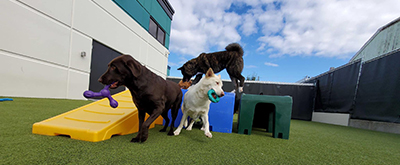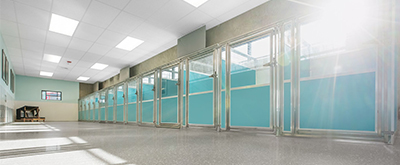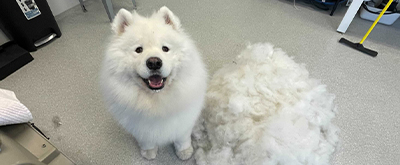Predatory Sequence (how wolves get a meal!):
Search > Stalk > Rush > Chase > Grab > Shake (kill) > Dissect > Consume
What is predatory drift?
Has your dog ever gone after a rabbit? A cat? A bird? Has he ever caught one? Or maybe you’ve seen him pounce on his favorite plushie, sink his teeth into it, shake it, and begin methodically pulling the stuffing out? During these moments, your dog is acting out different parts of the predatory sequence or in other words “how to catch a meal”.
Well, this prey drive is perfectly normal and this type of predatory behavior has an evolutionary significance. Imagine that your furry family member was a wild dog. In order for him to survive, he would have to be able to eat and, unfortunately, wild dogs don’t exactly hunt for kibble.
Because of this, some dogs (more than others) are more prone to acting out this type of behavior, meaning that they have a higher prey drive. This behavior is common – to a point and intensity. So, what exactly is predatory drift? And how does it affect off leash play groups?
Predatory drift happens when a dog suddenly decides that something or someone is going to be prey. Or when a normal, maybe even playful, interaction suddenly changes for one dog (or multiple dogs) into a food acquisition behavior. This could be because another dog deviates from the pack or makes a high-pitched squeal (prey-like action). Suddenly, and instinctually, another dog turns into prey. You cannot test or predict this behavior and you do not know who it can happen to. All we know is, if this happens, the dog will go through his version of the predatory sequence and the consequences could be deadly for the receiving dog – especially if a large dog goes after a little dog.
Here at Biscuits Doggie Daycare, we have separate playrooms. This allows us to separate our dogs by size. We have designated rooms for small, medium, and large dogs. We do this in order to keep our dogs as safe and happy as possible – even normal play can harm someone if the size difference is too great. All of our Team Members are well educated in canine behavior and body language and work hard every day to ensure that the type of play happening in our facility remains appropriate and that the energy levels remain in a “safe zone”.
So, imagine your small dog is in an off-leash play group. Would you rather have them hang out with the big dogs or dogs of like-size?
Steps you can take to keep your dog safe:
1. Ask your dog daycare about predatory drift. Do they know what it is? Are they taking steps to prevent it from happening?
2. Use caution at dog parks. Typically, fellow dog owners are not pet care professionals. Many dogs who should not be in off-leash playgroups are brought into dog parks every day. Dog communication is complex and takes proper time and education to understand.
3. Ask your dog daycare about their canine behavior and body language training. The world of dog daycare is shifting and there is more education available now than ever before for pet care professionals.
4. Make sure your dog is playing with other like-size dogs. If predatory drift happens, less damage will be done between two dogs of similar size.



